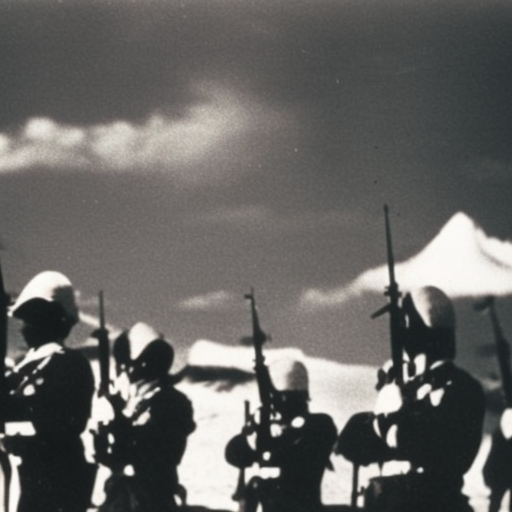Battle of Balaclava: A Fierce Clash in the Crimean War
The Battle of Balaclava was a significant engagement that took place during the Crimean War on October 25, 1854. It was fought between the British and Ottoman forces against the Russian Empire. The battle is best known for the famous Charge of the Light Brigade, a disastrous cavalry charge that has become synonymous with military blunders.
Background:
The Crimean War began in 1853 when Russia invaded the Ottoman Empire, seeking to expand its influence in the region. Britain and France, concerned about Russian expansion, joined forces with the Ottomans to oppose the Russian Empire. The British and French aimed to protect their interests in the region, including the strategic naval base at Balaclava.
The Battle:
The Battle of Balaclava can be divided into three main phases: the Russian assault on the British base, the Charge of the Light Brigade, and the defense of the British position.
The battle started with a Russian assault on the British base at Balaclava. The Russians aimed to capture the strategic port and disrupt the British supply lines. The British forces, led by Sir Colin Campbell, successfully defended their positions against the Russian attacks.
The most famous episode of the battle was the Charge of the Light Brigade. Due to a miscommunication, the British cavalry, under the command of Lord Cardigan, charged directly into heavily fortified Russian positions. The charge was a disaster, with the Light Brigade suffering heavy casualties from Russian artillery fire. Despite the losses, the bravery of the British cavalry became legendary.
After the disastrous charge, the British forces regrouped and defended their position against further Russian attacks. The British infantry, supported by artillery, managed to repel the Russian assaults and hold their ground.
Significance:
The Battle of Balaclava had several significant consequences. Firstly, it highlighted the incompetence and miscommunication within the British command structure. The Charge of the Light Brigade was a prime example of poor leadership and coordination, resulting in unnecessary casualties.
Secondly, the battle showcased the bravery and resilience of the British soldiers. Despite the disastrous charge, the British forces managed to hold their ground and repel the Russian assaults. This resilience boosted morale and demonstrated the determination of the British troops.
Furthermore, the battle had a significant impact on public opinion back in Britain. The heroism of the Light Brigade became a symbol of British military valor, despite the blunder that led to their losses. The battle also highlighted the harsh conditions faced by the British troops in the Crimean War, particularly during the harsh winter months.
Lastly, the Battle of Balaclava played a role in shaping the outcome of the Crimean War. Although the battle did not result in a decisive victory for either side, it contributed to the overall success of the British and French forces in the conflict. The defense of Balaclava ensured that the British supply lines remained intact, allowing the allies to continue their campaign against the Russian Empire.
In conclusion, the Battle of Balaclava was a significant engagement during the Crimean War. The famous Charge of the Light Brigade, along with the defense of the British position, became emblematic of the battle. Despite the miscommunication and blunders, the battle showcased the bravery and resilience of the British soldiers. The battle had a lasting impact on public opinion and contributed to the overall success of the British and French forces in the Crimean War.












